How To Choose The BestHigh-Efficiency Instant Noodles Production Line: 2025 Buyer’s Guide
Introduction: The Rise of High-Efficiency Instant Noodles Production Lines
The global demand for instant noodles has seen an exponential rise over the past few decades. According to the World Instant Noodles Association (WINA), more than 100 billion servings of instant noodles are consumed worldwide each year, a number that continues to grow steadily as the convenience and affordability of these products gain more popularity. Instant noodles have become an essential part of diets in many regions, especially in Asia, and their rapid growth has also led to innovations in the manufacturing process. As the industry grows, so does the need for advanced, sustainable, and efficient production solutions.
Energy efficiency has become a key factor in the modern production processes of instant noodles. With increasing energy costs and the push for environmentally friendly manufacturing, high-efficiency instant noodles production lines have emerged as a pivotal solution. These production lines not only aim to reduce energy consumption but also enhance productivity and ensure better product quality.
The significance of energy efficiency in food production cannot be overstated. Experts such as Professor David B. W. O'Neil, a leading figure in sustainable manufacturing, emphasize that “Energy-efficient technologies are no longer optional but essential for the competitiveness and sustainability of modern food production.” As such, the development of high-efficiency instant noodles production lines is part of a broader trend toward sustainable manufacturing practices in the food industry.
These advanced production lines incorporate a range of technologies and innovations designed to optimize energy usage while maintaining high output levels. The result is a production process that meets the growing consumer demand for instant noodles without compromising environmental responsibility. In addition, manufacturers are able to significantly reduce their operational costs over time. By utilizing high-efficiency systems, food manufacturers can remain competitive in an increasingly eco-conscious market, contributing to the overall goal of a greener and more sustainable food industry.
This article will explore the essential features of high-efficiency instant noodles production lines, the technological innovations driving energy savings, and the cost benefits that these systems bring to manufacturers. Additionally, we will examine future trends in energy-efficient food manufacturing and the role of these innovations in shaping the future of the instant noodles industry.
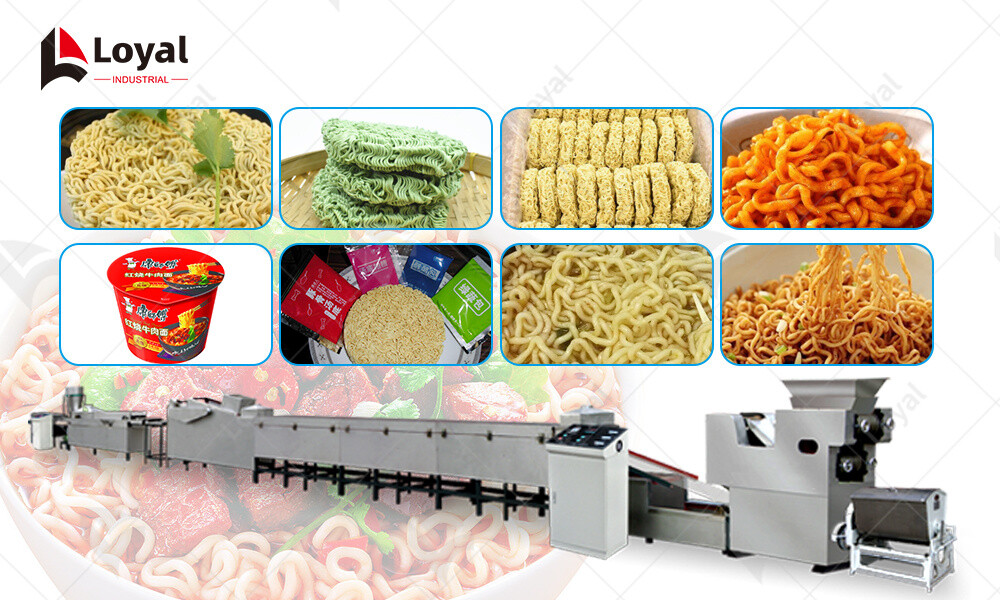
Key Features of High-Efficiency Instant Noodles Production Lines
As the global demand for instant noodles continues to soar, the food manufacturing industry faces mounting pressure to meet production targets while simultaneously reducing energy consumption and environmental impact. The high-efficiency instant noodles production line is a response to this challenge, combining advanced technologies with energy-saving features to revolutionize the way instant noodles are produced.
1.Advanced Automation and Smart Technology Integration
One of the defining characteristics of high-efficiency instant noodles production lines is their use of advanced automation systems. These automated lines are equipped with intelligent control systems that monitor and adjust various production parameters in real-time, ensuring that the manufacturing process runs smoothly and efficiently. For instance, sensors can detect fluctuations in temperature or humidity and make instant adjustments to maintain optimal conditions for noodle production. This not only ensures consistent product quality but also reduces the energy consumption associated with manual monitoring and adjustments.
Automation also enables manufacturers to streamline production, reducing labor costs and human error while improving overall productivity. The integration of smart technology in these production lines further enhances their efficiency. Through the use of Internet of Things (IoT) devices, manufacturers can remotely monitor production performance, track energy usage, and even predict maintenance needs, preventing costly downtime and increasing overall system reliability.
2.Energy-Saving Features and Innovations
At the heart of the high-efficiency instant noodles production line are a variety of energy-saving technologies that minimize energy consumption throughout the production process. One such innovation is the use of energy-efficient motors and heat exchangers, which reduce the energy required to operate key machinery like ovens, fryers, and mixers. These motors are specifically designed to operate at lower power levels while still maintaining high performance, thus ensuring energy savings without sacrificing production capacity.
In addition to motor efficiency, energy-efficient heating systems are implemented to optimize the temperature control during cooking and frying processes. Traditional heating systems can be wasteful, losing large amounts of heat to the environment. However, high-efficiency instant noodles production lines are designed with advanced insulation materials and energy-saving technologies that significantly reduce heat loss, making the production process more sustainable and cost-effective.
3.Enhanced Production Capacity and Speed Without Compromising Quality
A major challenge for food manufacturers is increasing production capacity while maintaining high product quality. With high-efficiency instant noodles production lines, manufacturers can meet growing demand by significantly boosting production speed without compromising the consistency or quality of the noodles. These lines are designed to optimize every aspect of the production process—from dough mixing to frying and packaging—while ensuring that each step is executed with precision.
For example, continuous frying technology allows for uniform frying of noodles at higher speeds, while advanced drying technologies maintain the product's texture and flavor despite the rapid processing times. Additionally, automated packaging systems help to further speed up the process by reducing manual intervention and minimizing errors. By increasing production speed while still adhering to high-quality standards, manufacturers can improve their output and remain competitive in a fast-paced market.
4.Integration of Environmentally Friendly Materials and Processes
Sustainability is at the core of high-efficiency instant noodles production lines. These systems prioritize the integration of environmentally friendly materials and processes to reduce the ecological footprint of manufacturing operations. Manufacturers are increasingly incorporating biodegradable packaging materials and adopting processes that minimize waste, such as closed-loop water systems that recycle water used in the production process.
Furthermore, many production lines now utilize green energy sources, such as solar or wind power, to run key machinery, further decreasing their reliance on traditional fossil fuels. This integration of eco-friendly materials and processes not only contributes to a greener manufacturing environment but also resonates with consumers who are increasingly concerned about the environmental impact of their food choices.
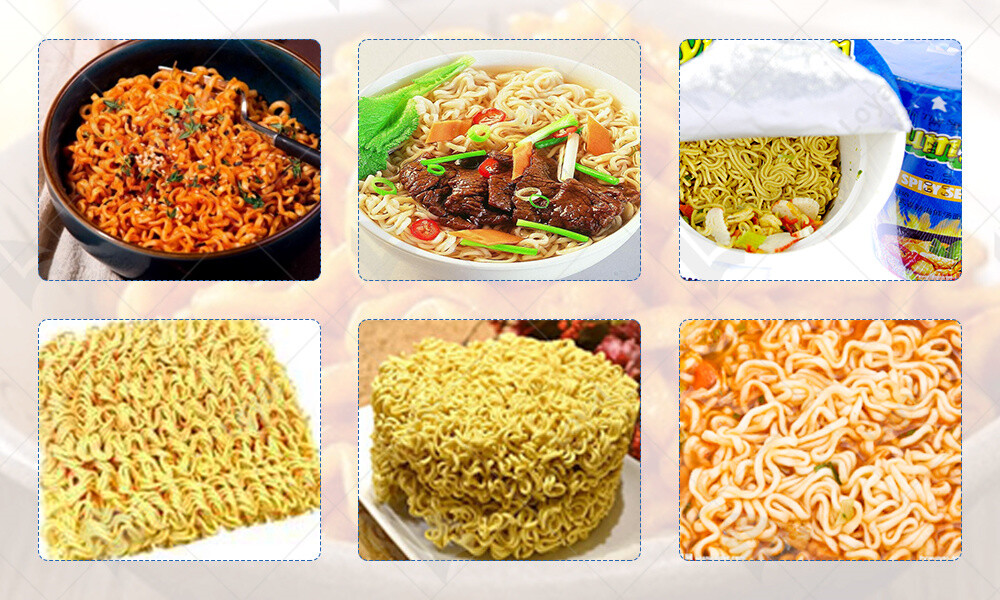
Technological Innovations Driving Energy Savings
The success of high-efficiency instant noodles production lines relies heavily on cutting-edge technologies that drive significant energy savings throughout the production process. One of the most notable innovations is the use of energy-efficient motors. These motors consume less power while maintaining the high performance necessary for tasks like dough mixing, frying, and drying, ultimately reducing the overall energy footprint of the production line.
Another key innovation is the integration of optimized heat exchange systems. Traditional heating systems often lose large amounts of energy, but with advanced heat exchangers, heat can be recycled more efficiently within the production process. This leads to less energy waste and ensures that the noodles are cooked at optimal temperatures with minimal energy consumption.
Smart control systems are also crucial in managing energy use efficiently. By monitoring energy consumption in real-time, these systems can adjust parameters like cooking times and temperatures automatically, ensuring that energy is used only when needed. This proactive approach not only reduces energy waste but also prevents unnecessary wear on equipment, prolonging the life of the production line.
In addition, advanced drying technologies such as infrared and microwave drying are now being used in high-efficiency production lines. These methods significantly cut down on energy use compared to traditional methods, while ensuring that the noodles maintain their flavor and texture.
Together, these technological innovations make high-efficiency instant noodles production lines a vital solution for reducing energy costs and promoting sustainable manufacturing practices.
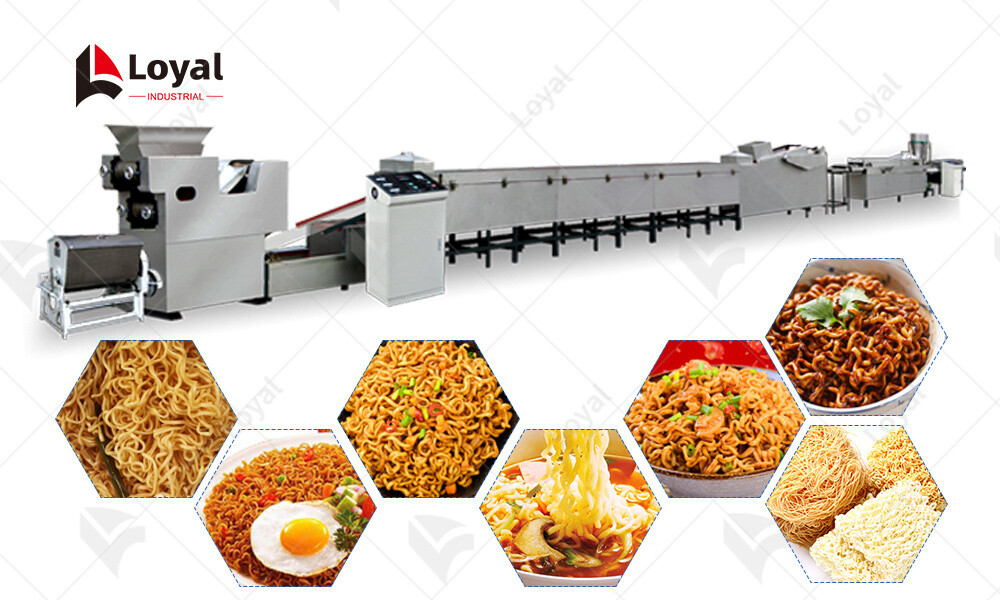
Cost Benefits of High-Efficiency Instant Noodles Production Lines
Adopting high-efficiency instant noodles production lines offers significant cost benefits, particularly in terms of energy savings and long-term financial efficiency. One of the primary advantages is the reduction in energy bills. By integrating energy-efficient motors, optimized heating systems, and advanced heat exchangers, manufacturers can reduce overall energy consumption, resulting in lower operational costs.
The reduction in energy usage also leads to a faster return on investment (ROI). Though the initial setup cost of high-efficiency systems may be higher, the savings on energy bills over time quickly offset the investment. According to industry experts, manufacturers can expect a return within 2-3 years, depending on the scale of production.
Moreover, the enhanced automation in high-efficiency production lines reduces the need for labor, further lowering costs. With fewer workers required for manual tasks and improved system reliability, manufacturers can focus on scaling up production without significantly increasing overhead.
In the long run, these energy savings and reduced operational costs help manufacturers remain competitive while maintaining sustainable practices. This shift not only improves the bottom line but also supports global goals for more environmentally responsible manufacturing.
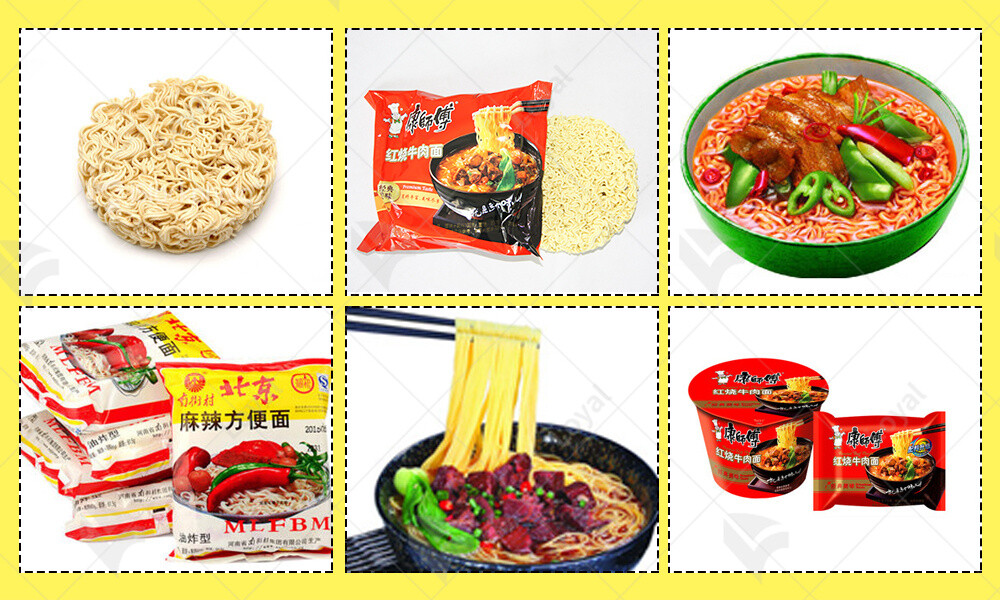
Future Trends: What’s Next for High-Efficiency Instant Noodles Production?
As the demand for high-efficiency instant noodles production lines continues to rise, future trends point toward even more advanced technologies and greater integration of automation. One major trend is the increased adoption of AI and IoT (Internet of Things) to optimize production processes. These technologies enable real-time monitoring and data analysis, allowing manufacturers to predict maintenance needs, reduce downtime, and further improve energy efficiency.
Another emerging trend is the use of sustainable energy sources, such as solar and wind power, in the operation of production lines. This shift aligns with growing environmental concerns and helps reduce reliance on fossil fuels, contributing to a greener manufacturing process.
Additionally, smart packaging technologies are expected to become more prevalent. By integrating sensors and tracking systems into packaging, manufacturers can reduce waste and improve inventory management, all while maintaining product quality.
Finally, innovations in heat recovery systems and microgrid technology will likely play a key role in reducing energy consumption even further, providing manufacturers with a more sustainable and cost-effective approach to production.
These trends will help shape the future of instant noodles production, pushing the industry toward even more energy-efficient, automated, and environmentally friendly solutions.
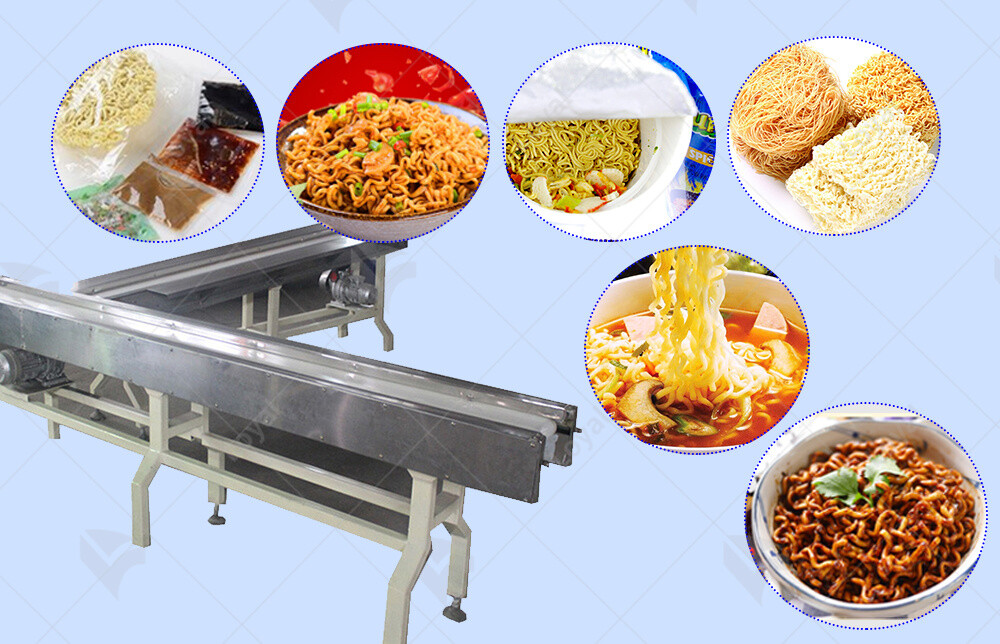
Conclusion: The Future of Sustainable Instant Noodles Production
The future of high-efficiency instant noodles production lines is poised to transform the food manufacturing industry, balancing growing consumer demand with the need for sustainability. As we’ve explored, the integration of advanced technologies—such as energy-efficient motors, optimized heating systems, and smart automation—has already begun to redefine production efficiency. These innovations not only reduce energy consumption but also enhance productivity, allowing manufacturers to increase output while minimizing their environmental footprint.
The high-efficiency production line represents a crucial step toward making the instant noodles industry more sustainable. By adopting energy-saving technologies, manufacturers can significantly lower energy costs, which can lead to a more competitive and financially stable business model. The use of smart control systems that monitor energy consumption in real time allows manufacturers to fine-tune operations, ensuring that energy is used only when necessary. This results in lower waste and better resource management, which directly translates to cost savings and higher efficiency.
Moreover, sustainability is no longer just about energy efficiency. The integration of renewable energy sources, such as solar or wind power, is expected to become more common in the coming years. This would allow manufacturers to operate production lines that are not only energy-efficient but also carbon-neutral, aligning with global goals for reducing carbon emissions and fostering environmental responsibility. Coupled with eco-friendly materials in packaging and manufacturing processes, these efforts will help further reduce the ecological footprint of instant noodles production.
In addition to energy and environmental concerns, the role of automation in driving efficiency cannot be overstated. As manufacturers look for ways to scale production and reduce labor costs, the incorporation of AI and IoT technologies will become even more important. These technologies allow manufacturers to monitor and adjust production in real-time, predict maintenance needs, and optimize production schedules—all of which lead to greater efficiency, reduced downtime, and lower overall costs. Furthermore, robotic systems are likely to play a greater role in automating tasks such as packaging and quality control, further improving overall productivity.
The future of instant noodles production is not only about increasing capacity but also about ensuring that production processes are aligned with environmental goals. As more companies embrace high-efficiency production lines, we can expect to see a shift toward cleaner, greener manufacturing practices that benefit both the bottom line and the planet. By focusing on sustainability, manufacturers will not only respond to consumer demand for more eco-conscious products but will also meet regulatory requirements and contribute to global sustainability efforts.
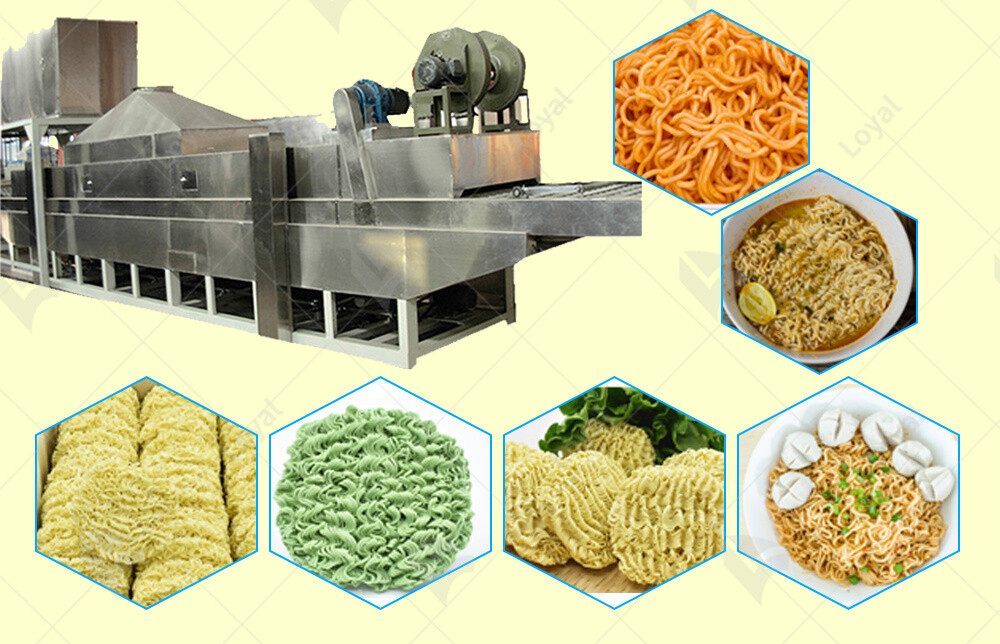
Reference
The following are five authoritative foreign literature websites in the field of Industrial food machinery:
1. Food Engineering Magazine
Website: https://www.foodengineeringmag.com/
2.Food Processing Magazine
Website: https://www.foodprocessing.com/
3.Journal of Food Engineering
Website:https://www.journals.elsevier.com/journal-of-food-engineering
4. Food Manufacturing Magazine
Website:https://www.foodmanufacturing.com/
5. International Journal of Food Science & Technology
Website:https://onlinelibrary.wiley.com/












